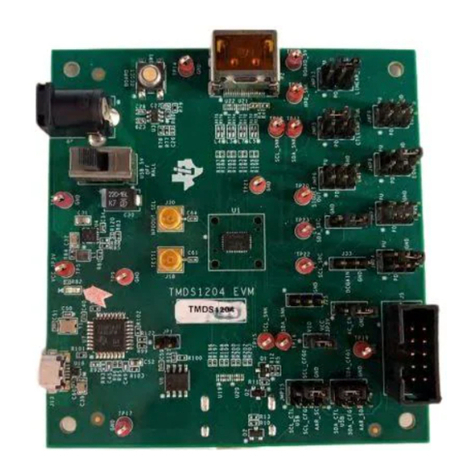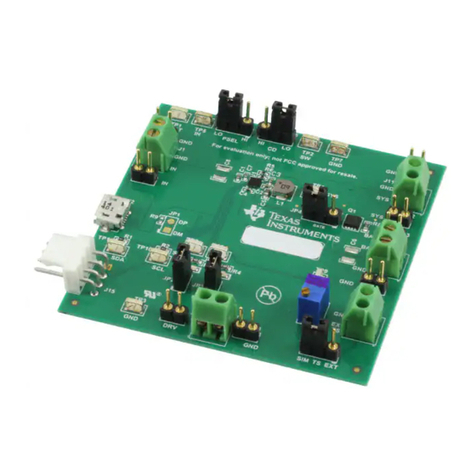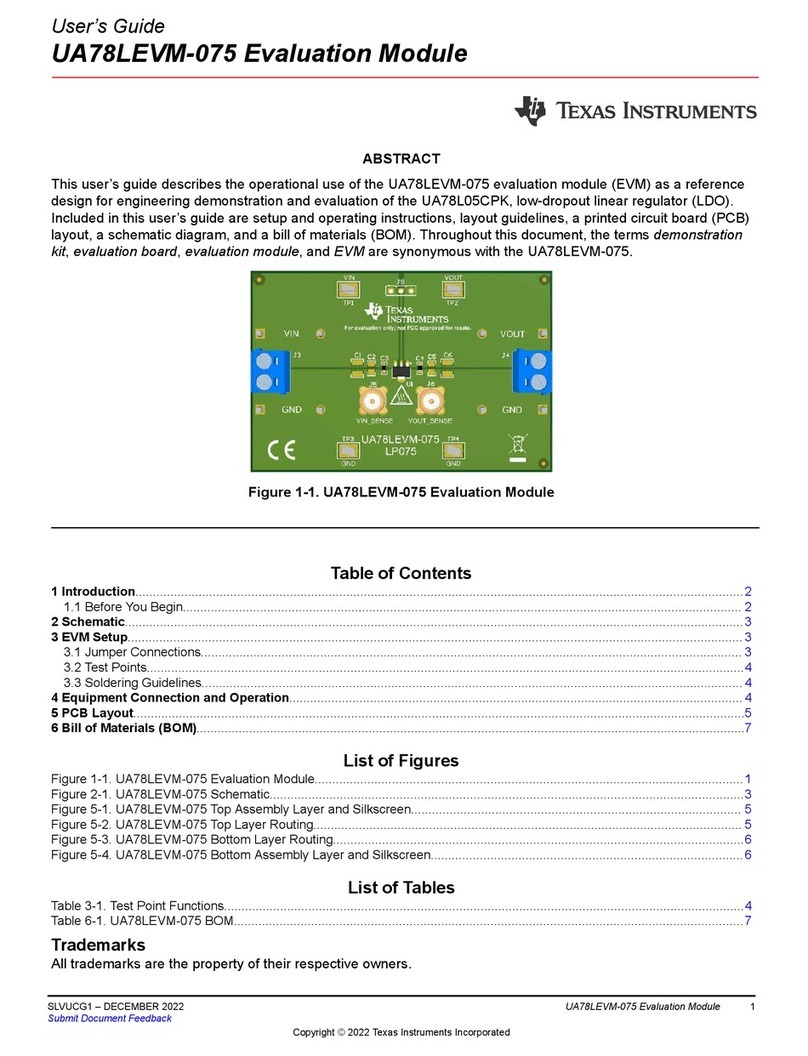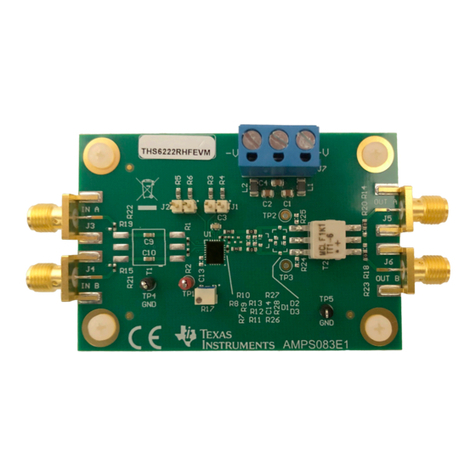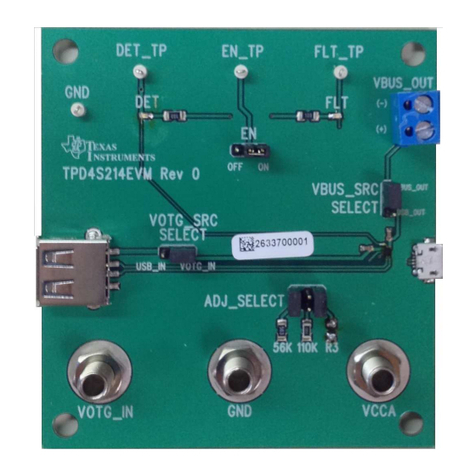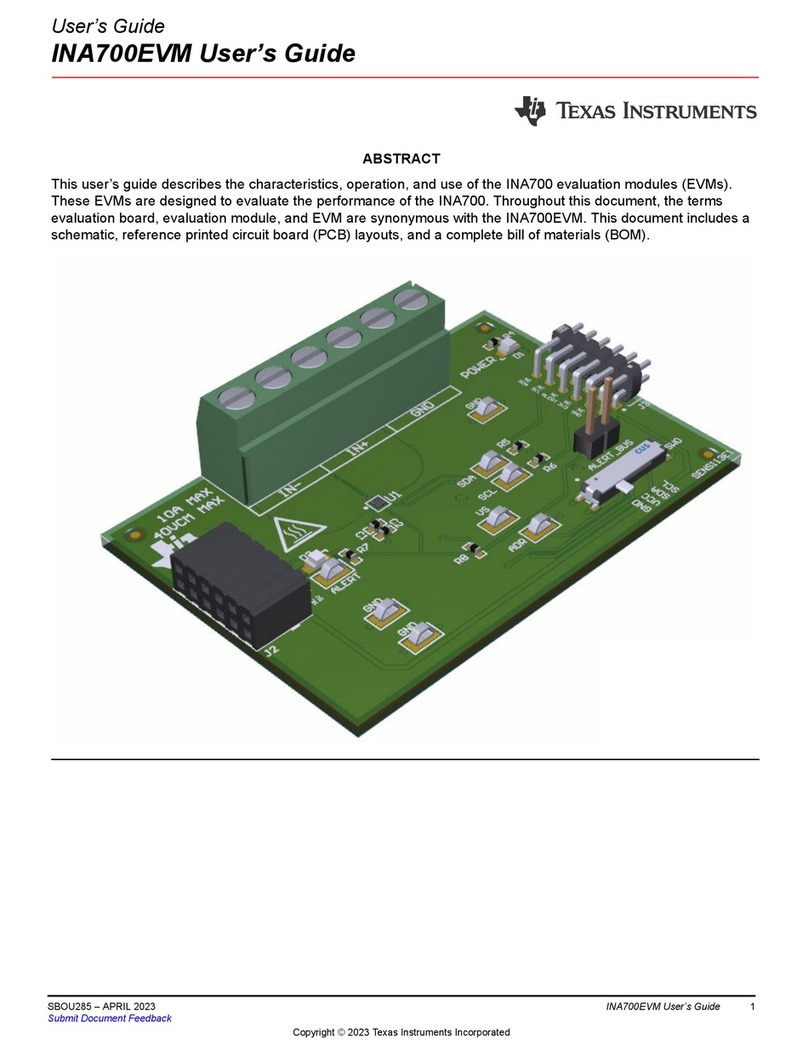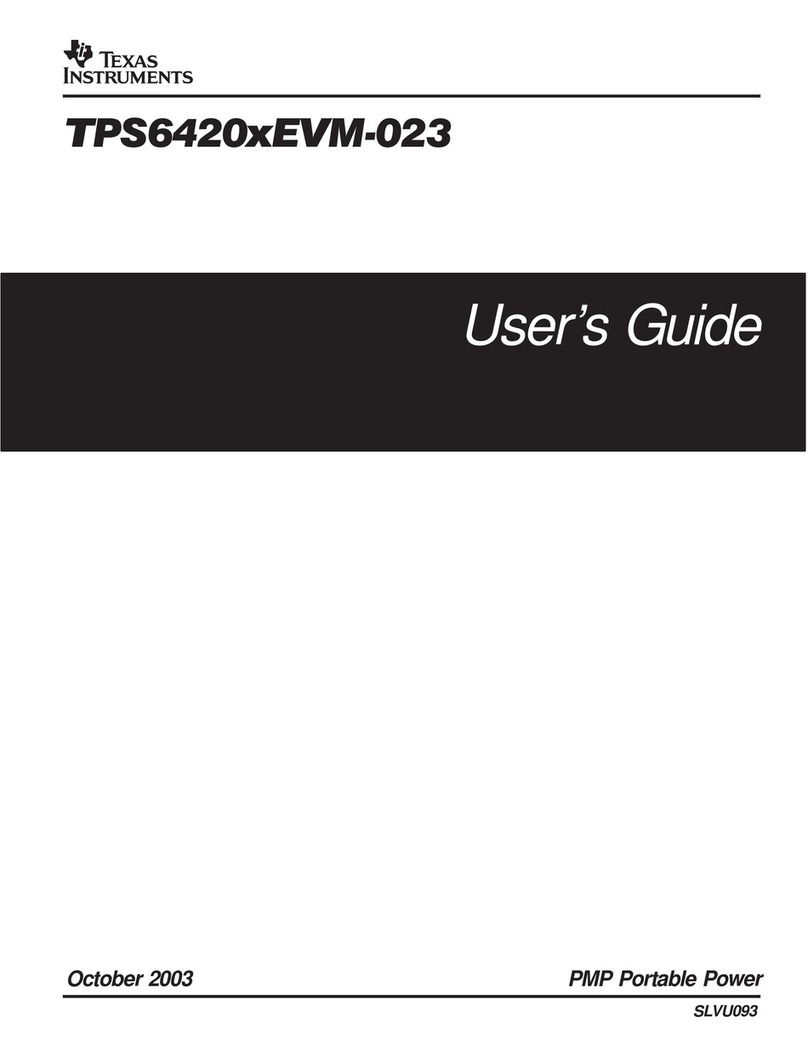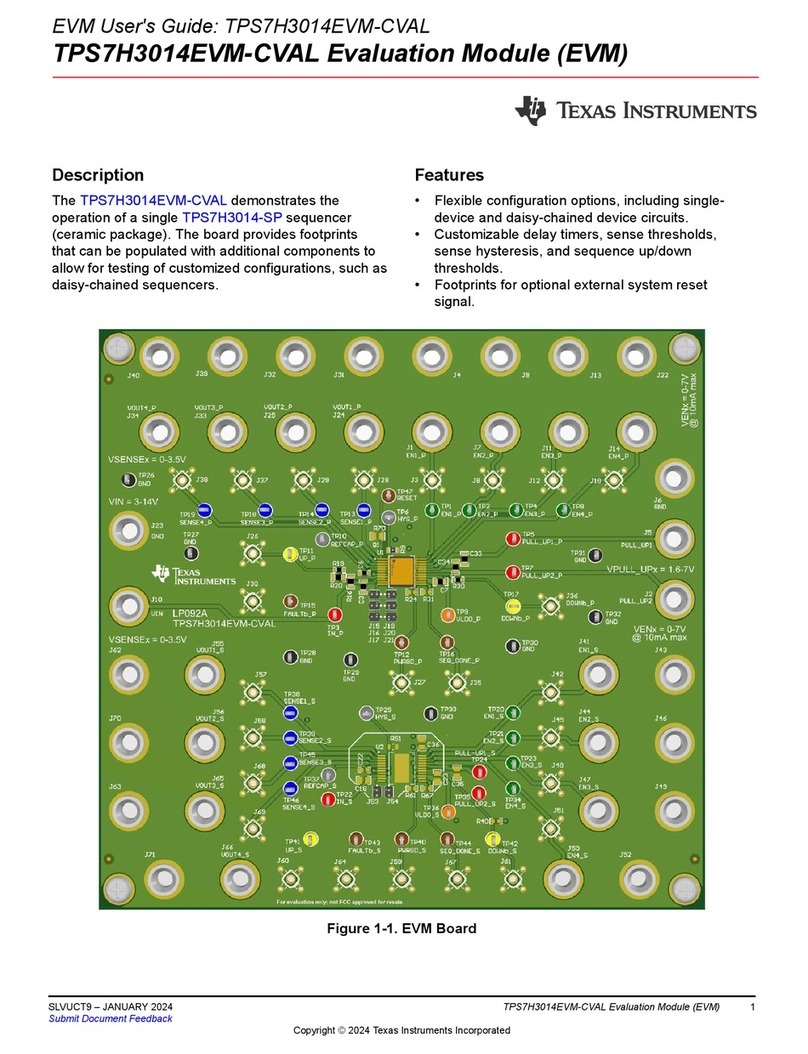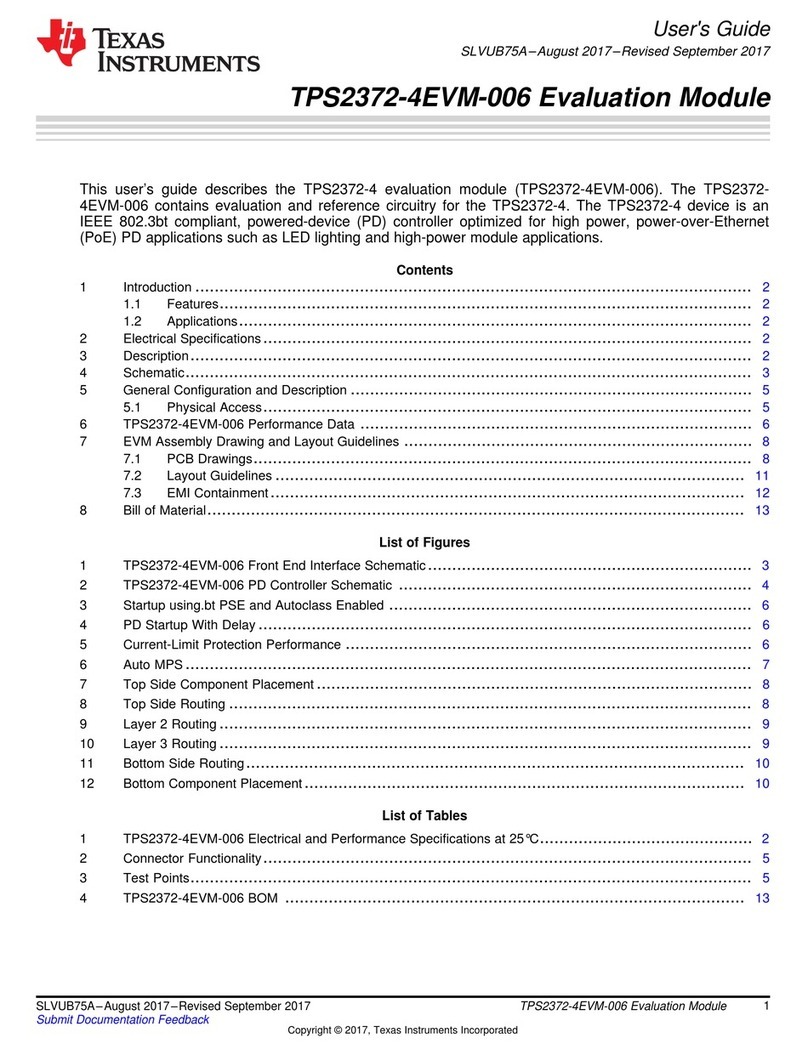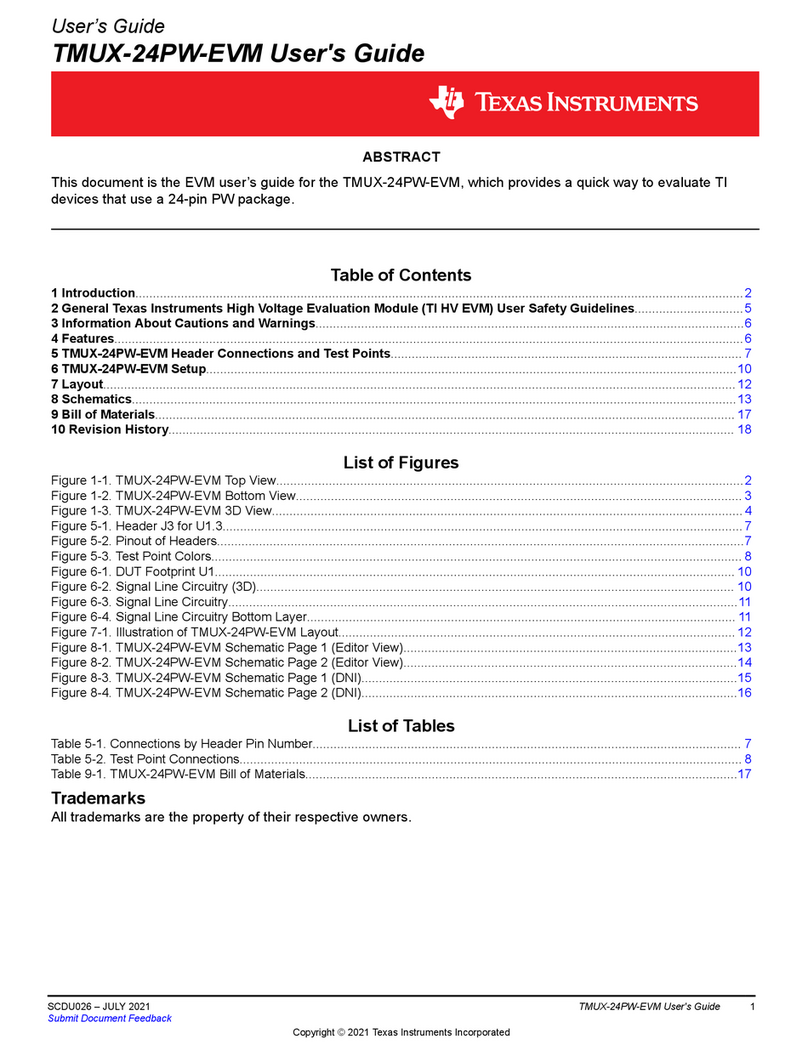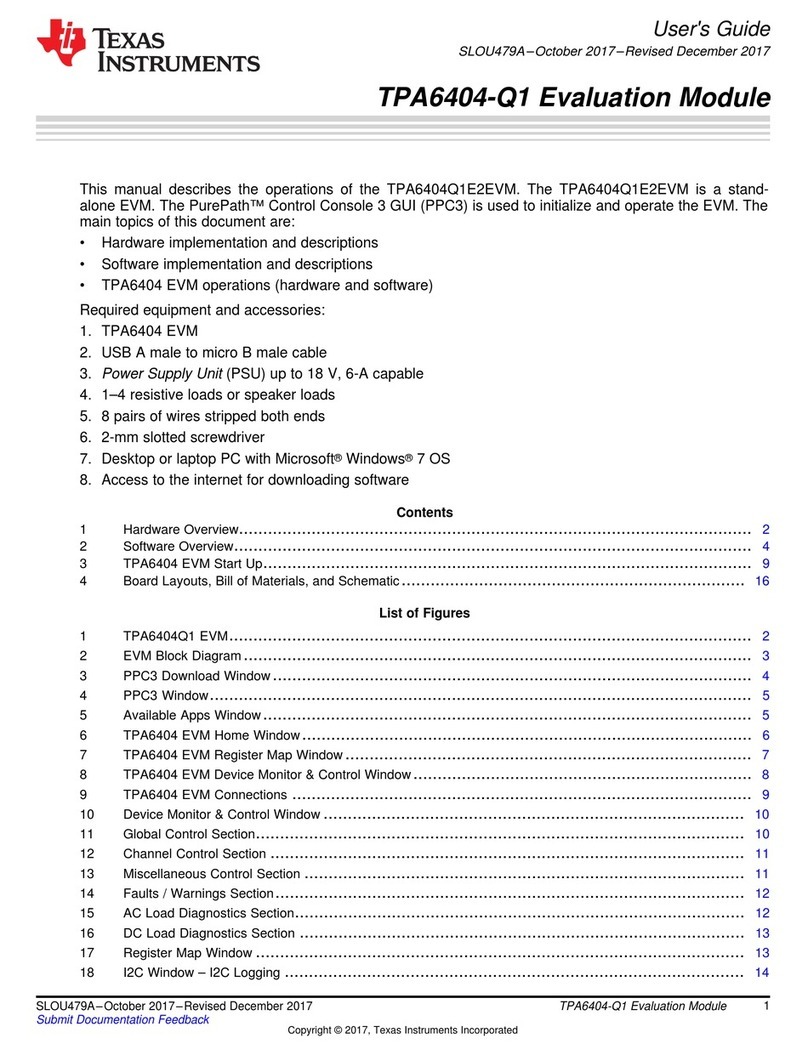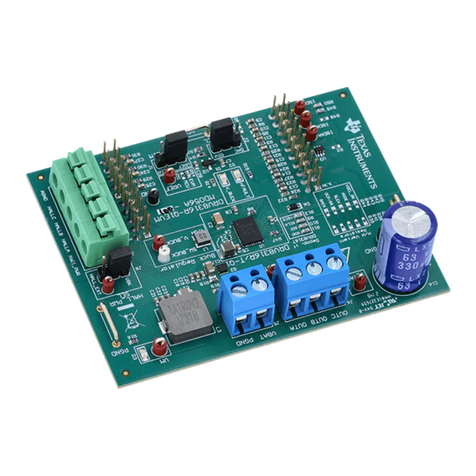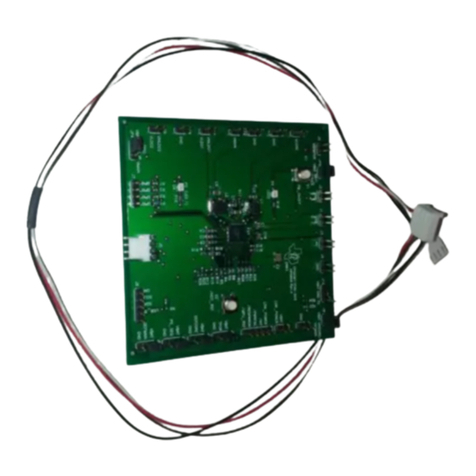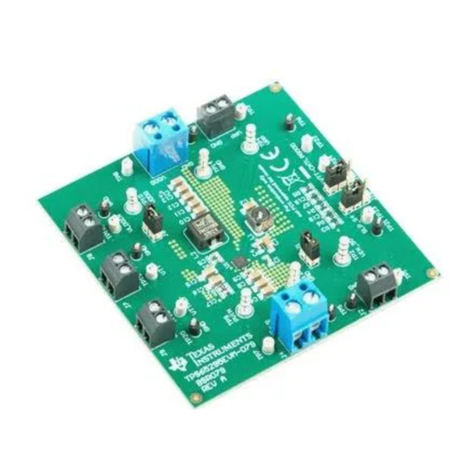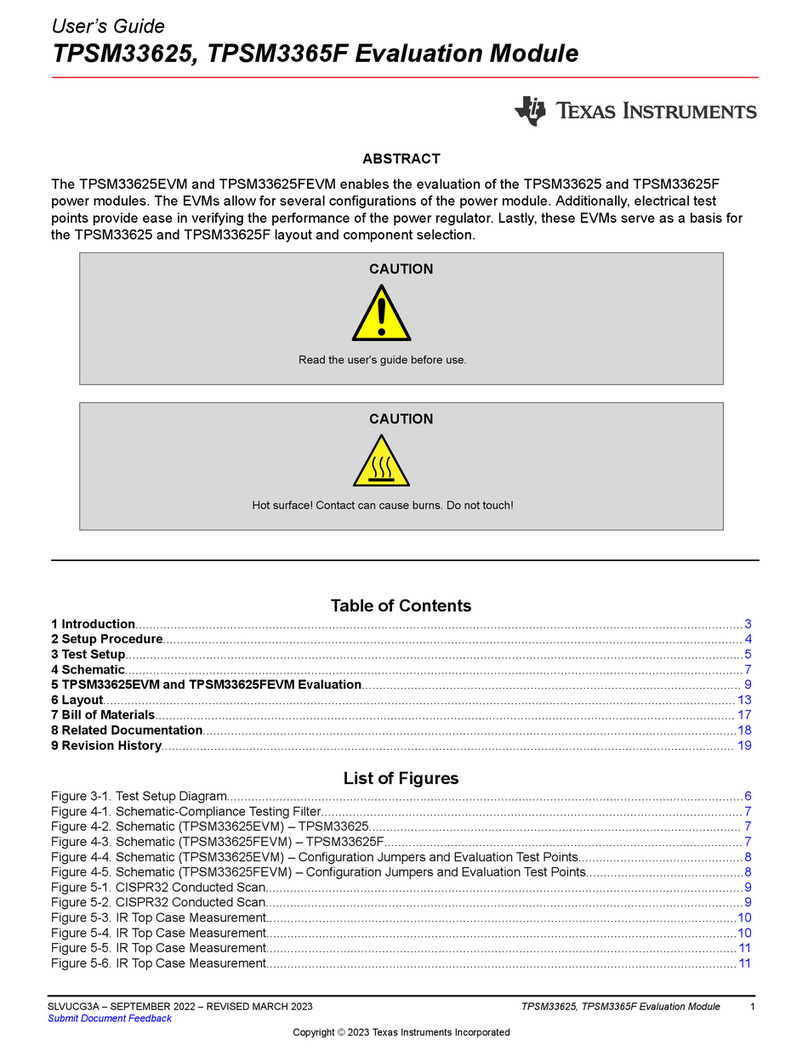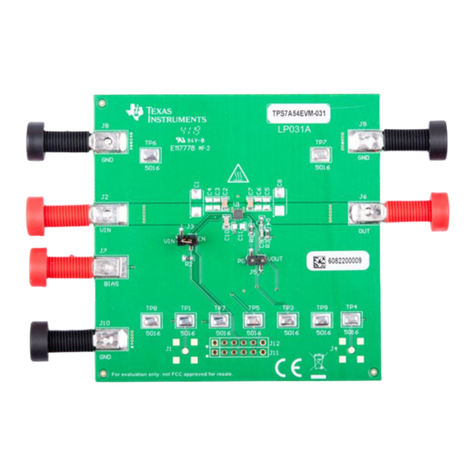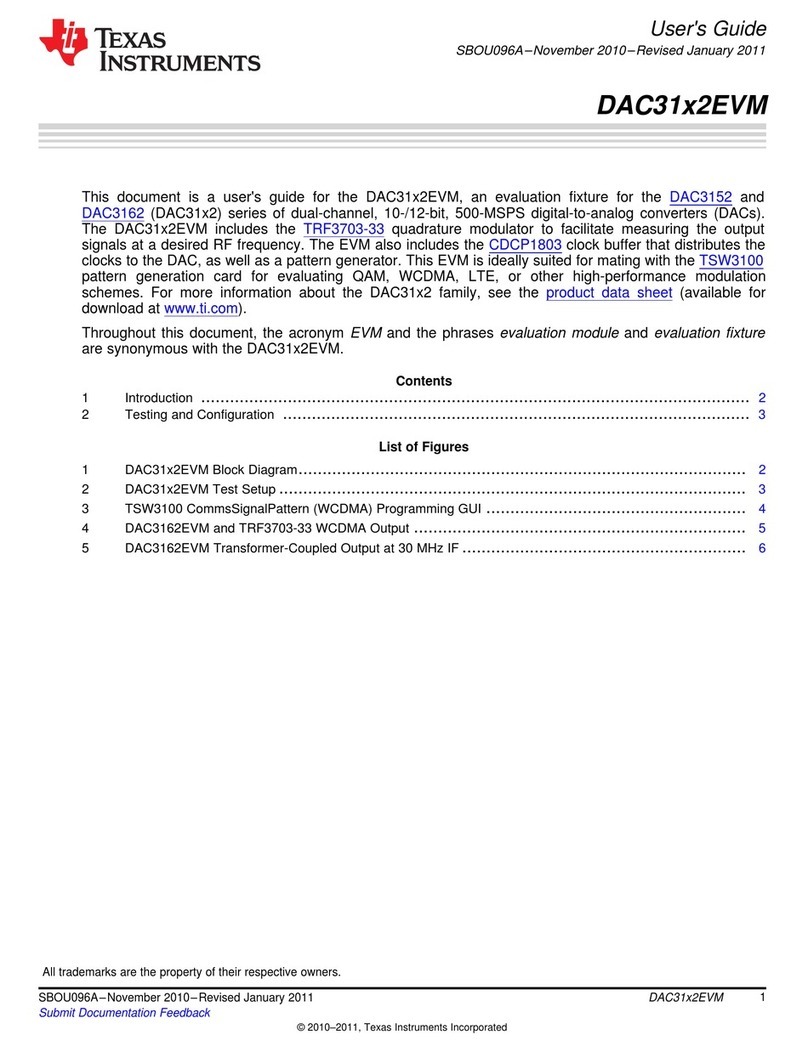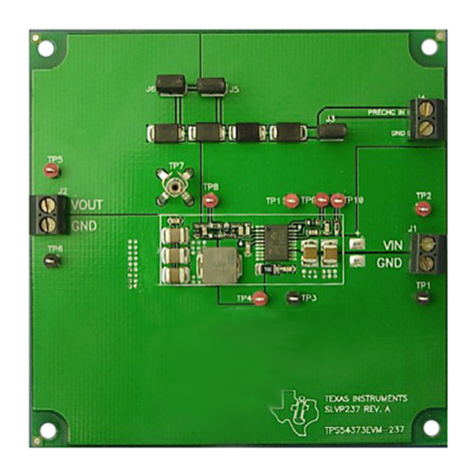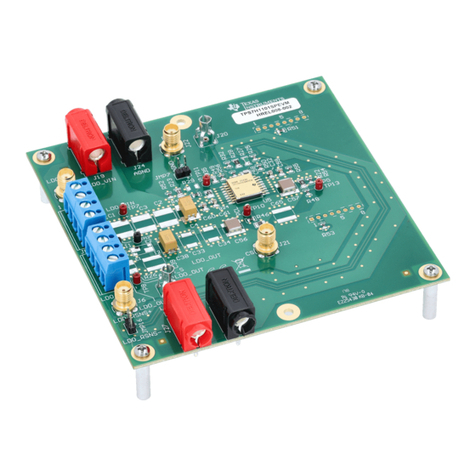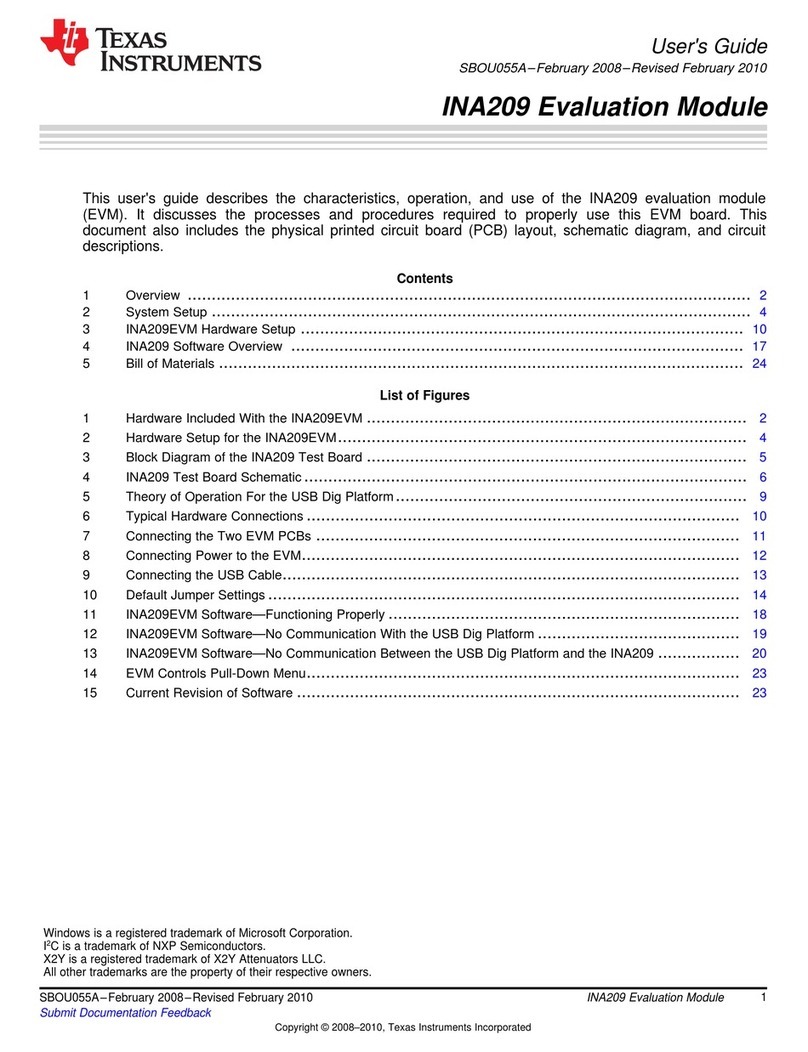
5.2 Digital Control
5.3 Frame Synchronization ( SYNC)
5.4 Default Jumper Locations
6 EVM Bill of Materials and Schematic
EVM Bill of Materials and Schematic
The digital control signals SYNC and SCLK can be applied directly to J2 (top or bottom side). The serialdata input must be applied to J2B pin 11 or the test point labeled SDI found beside J2. The DAC7811EVM can also be connected directly to a DSP or microcontroller interface board such as the 5-6KInterface Board, the HPA-MCU Interface Board, or the HPA449. See the DAC7811 product folder on theTI Web site (www.ti.com ) for a current list of compatible interface and/or accessory boards.
Connector J2 pin 7 applies the frame synchronization control to the DAC7811’s SYNC pin. When using a5-6K Interface or HPA-MCU Interface Board, J2 pin 7 ties the SYNC pin to the Frame Sync pin of the DSPor STE pin of the microcontroller. A 16-bit command+data word is then applied to the SDI input of theDAC7811. Releasing the active low SYNC pin updates the DAC output.
The DAC7811 powers up in the daisy-chain mode which must be used when two or more devices areconnected in tandem. The SCLK and SYNC signals are shared across all devices while the SDO output ofthe first device connects to the SDIN input of the following device, and so forth. In this configuration, 16SCLK cycles for each DAC7811 in the chain are required. For n devices in a daisy-chain configuration,16n SCLK cycles are required to shift in the entire input data stream. After 16n active SCLK edges arereceived following a falling SYNC, the data stream becomes complete, and SYNC can brought high toupdate the DAC outputs. Up to seven DAC7811EVMs can be used in this mode simultaneously.
Table 5 provides a list of jumpers and switches found on the EVM and their factory default conditions.
Table 5. List of Jumpers and Switches
Jumper Shunt Position Jumper Description
W1 closed Applies the DAC7811 current output to U2. W1 is fixed with a 0- Ωresistor.W2 Pins 1-2 Controls which pin on J1 the output voltage from U2 is applied to. Default is pin 4. Output voltage fromthe EVM can also be monitored on TP2, which is useful for daisy-chain operating mode.SW1 RIGHT Controls analog output voltage (default is ±Vref)R12 OPEN R12 can be replaced by removing the 0- Ωresistor found at W1 to provide the current output directlyfrom the DAC7811 to J1 pin 2.
Table 6 contains a complete bill of materials for the modular DAC7811 EVM. The schematic diagram isalso provided for reference.
Table 6. Bill of Materials
Designators Description Manufacturer Mfg. Part Number
C1 2.2 µF, 0805, Ceramic TDK C2012X5R1A225KC2 C3 C6 C7 C8 C10 0.1 µF, 0603, Ceramic, X7R, 50V TDK C1608X7R1H104KC4 18 pF, 0603, Ceramic, COG TDK C1608COG1H180JC9 10 µF, 1206, Ceramic, Y5V TDK C3216Y5V1C106ZJ1 J2 (top side) 10 Pin, Dual Row, SMT Header (20 Pos.) Samtec TSM-110-01-T-DV-PJ1B J2B(bottom side) 10 Pin, Dual Row, SMT Socket (20 Pos.) Samtec SSW-110-22-F-D-VS-KJ3 (top side) 5 Pin, Dual Row, SMT Header (10 Pos.) Samtec TSM-105-01-T-DV-PJ3B (bottom side) 5 Pin, Dual Row, SMT socket (10 Pos.) Samtec SSW-105-22-F-D-VS-KR1 R13 20K Ω, 0603, 5%, 0.1 W resistor Yageo America 9C06031A2002JLHFTR3 R4 20K Ω, 4mm POT Bourns 3214W-1-203E
SLAU163 – September 2005 DAC7811EVM 5

